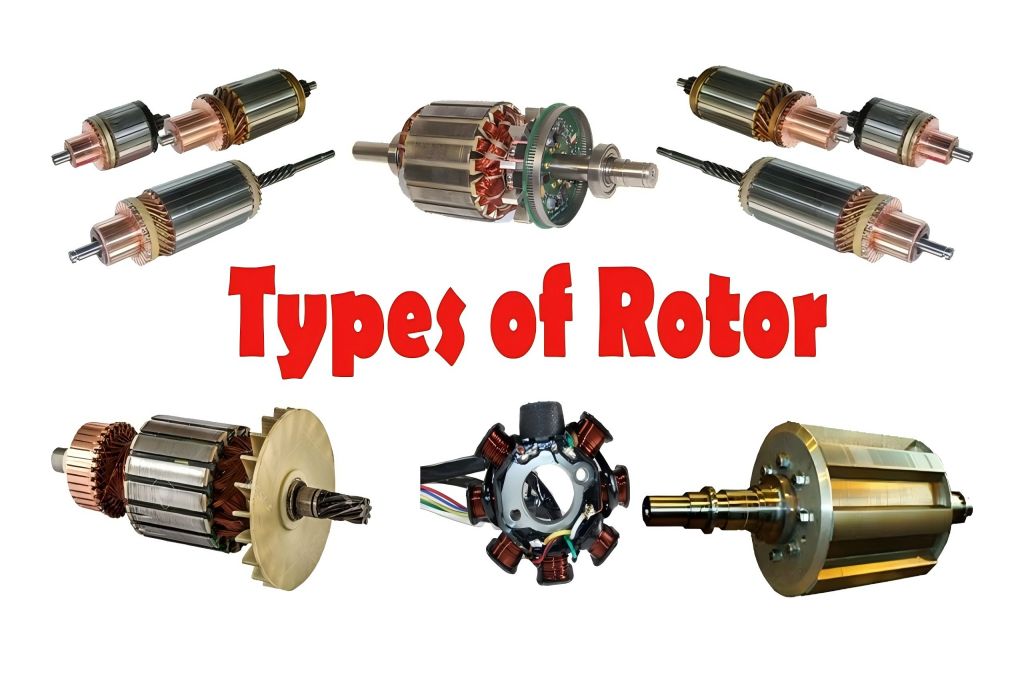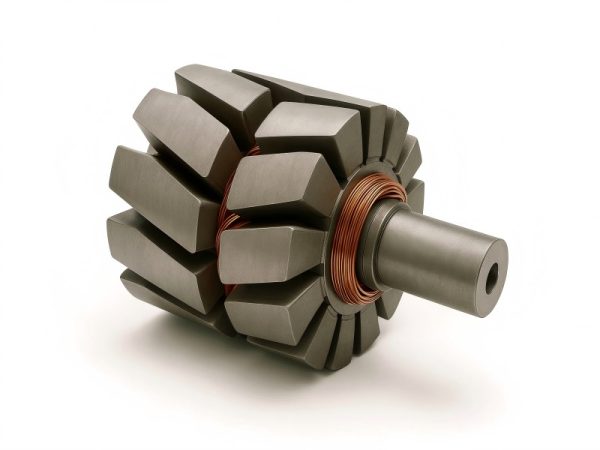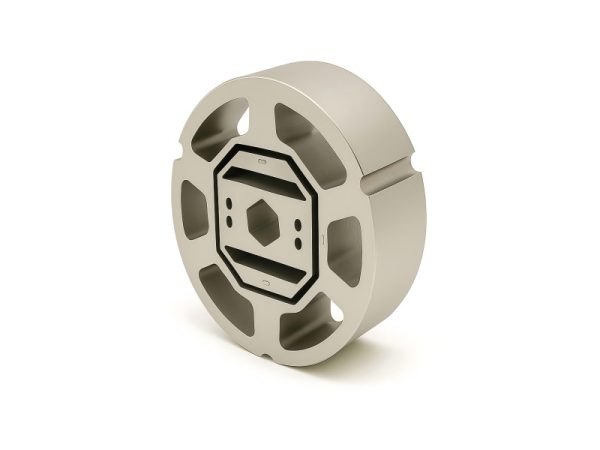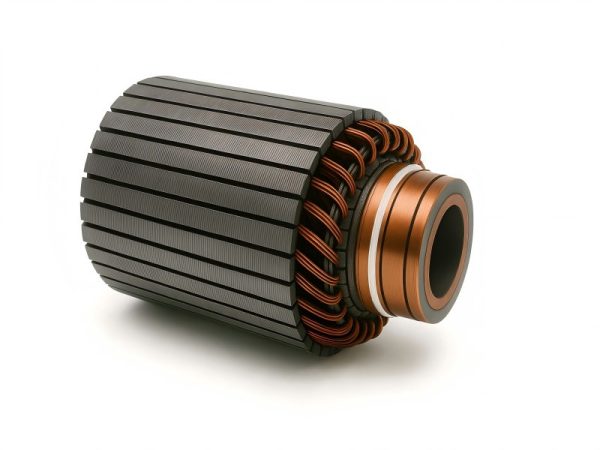Electric motors are essential in modern technology, and at the heart of every motor is its rotor. An essential component in the transformation of electrical energy into mechanical motion is the rotor. Motor rotors come in a variety of forms, each intended for a particular use and guaranteeing maximum effectiveness, longevity, and performance.
Understanding these different rotor types and their applications can help engineers, manufacturers, and end-users make informed decisions when selecting a motor for their specific needs.
What is a Motor Rotor?
A rotor is the moving component of an electric motor that rotates within the stator to produce motion. It causes rotation, which powers mechanical devices, by interacting with the stator’s electromagnetic field. Rotors are classified based on their construction, material composition, and method of interaction with the stator’s magnetic field.
The primary types of motor rotors include squirrel cage rotors, wound rotors, permanent magnet rotors, salient pole rotors, and cylindrical rotors. Every type has distinct qualities that dictate which applications it is appropriate for.
Squirrel Cage Rotor
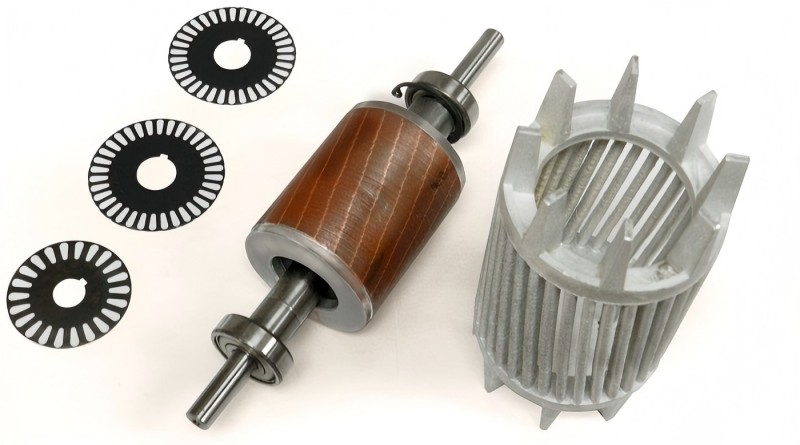
It is made up of circularly organized conductive bars that are joined at both ends by conductive rings. The structure resembles a squirrel cage, hence its name. The bars and rings form a closed electrical loop, which induces currents when exposed to a rotating magnetic field, generating torque. Commonly used in induction motors.
| Pros | Cons |
| Durable, maintenance-free, no brushes or slip rings. | Limited torque control compared to wound rotor motors.
|
| High efficiency and reliability for continuous operation. | Not suitable for applications requiring variable-speed operations.
|
| Simple and cost-effective design. |
Applications
- Industrial Machinery: Used in conveyors, pumps, and compressors due to its durability and simple design.
- HVAC Systems: Perfect for fans and air conditioners.
- Home Appliances: Used in fans, refrigerators, and washing machines.
- Automotive Industry: Used in electric vehicle auxiliary systems such as cooling fans and water pumps.
Wound Rotor (Slip Ring Rotor)
The wound rotor, or slip ring rotor, has windings linked to external resistors through slip rings. The resistors allow for better control over torque and speed during motor startup and operation. This makes wound rotor motors suitable for high-inertia applications where smooth acceleration is required.
| Pros | Cons |
| Superior torque control. | Requires regular maintenance due to brushes and slip rings.
|
| Appropriate for high initial load applications. | More expensive and sophisticated than squirrel cage rotors. |
| Adjustable speed via external resistance control. |
Applications
- Cranes and Hoists: Essential for lifting equipment requiring high starting torque.
- Mills and Crushers: Ideal for cement and mining industries, where heavy loads require controlled acceleration.
- Wind Turbines: Found in doubly-fed induction generators for efficient energy conversion.
Permanent Magnet Rotor
Permanent magnet rotors use strong magnets (typically made of neodymium or ferrite) embedded in the rotor to generate a constant magnetic field. Unlike induction rotors, these do not rely on induced currents, making them highly efficient.
| Pros | Cons |
| Higher efficiency compared to induction motors. | Higher manufacturing costs due to expensive rare-earth magnets. |
| Compact and lightweight design. | Susceptible to demagnetization under high temperatures. |
| Excellent speed control and response. |
Applications
- Electric Vehicles (EVs): Used in traction motors for higher efficiency and performance.
- Industrial Automation: Found in robotic arms and CNC machines requiring precise control.
- Renewable Energy: Used in wind and hydroelectric generators.
- Consumer Electronics: Present in hard drives and cooling fans.
Salient Pole Rotor
Salient pole rotors, which have big, projecting poles fixed on a magnetic core, are utilized in synchronous machines. They are designed for low-speed applications and operate by synchronizing with the stator’s rotating magnetic field.
| Pros | Cons |
| High torque at low speeds. | Bulkier and larger than cylindrical rotors. |
| Efficient operation in large-scale power generation. | Requires precise control for synchronization. |
| Stable synchronization with the power grid. |
Applications
- Hydroelectric Power Plants: Used in synchronous generators for stable power generation.
- Pulp and Paper Industry: Common in large industrial synchronous motors.
- Marine Applications: Used in ship propulsion motors.
Cylindrical Rotor
Also referred to as non-salient pole rotors, cylindrical rotors are smooth and devoid of projecting poles. These rotors are commonly found in high-speed synchronous generators, especially in thermal and nuclear power plants.
| Pros | Cons |
| Designed for high-speed operation. | Not suitable for low-speed applications. |
| Smooth operation with minimal vibration. | Requires precise cooling and maintenance. |
| Capable of handling high mechanical stresses. |
Applications
- Power Generation: Used in gas and steam turbines operating at high speeds.
- Industrial Applications: Found in high-speed compressors and centrifugal pumps.
- Aerospace Industry: Utilized in aircraft engine generators.
Coreless Rotor
Coreless rotors, also known as ironless rotors, eliminate the traditional iron core found in standard rotors. Instead, they use a lightweight coil structure, reducing inertia and improving response time.
| Pros | Cons |
| Extremely lightweight and fast response. | Limited torque production compared to conventional rotors. |
| Reduced energy consumption and heating. | More expensive due to specialized manufacturing techniques. |
| High efficiency in low-inertia applications. |
Applications
- Medical Devices: Used in prosthetics and precision surgical tools.
- Aerospace Systems: Found in gyroscopes and actuators.
- Consumer Electronics: Used in high-end audio equipment and cameras.
Choosing the Right Rotor for Your Application
Selecting the appropriate rotor type depends on factors such as power requirements, operational speed, torque characteristics, and cost considerations.
For industrial applications requiring robust and cost-effective solutions, squirrel cage rotors are often the best choice. On the other hand, for precision and high-performance applications, permanent magnet rotors or coreless rotors provide superior efficiency and control.
For power generation, salient pole and cylindrical rotors dominate due to their ability to handle heavy loads and maintain stable synchronous operation. Meanwhile, wound rotors offer superior control over torque and acceleration, making them ideal for heavy-duty machinery.
Conclusion
Understanding the different types of motor rotors and their applications is essential for optimizing motor performance and ensuring long-term reliability. Whether it’s for industrial automation, renewable energy, transportation, or consumer electronics, choosing the right rotor type can significantly impact efficiency, cost, and durability.
With advancements in motor technology, new rotor designs and materials continue to emerge, shaping the future of electric motors in various industries.

